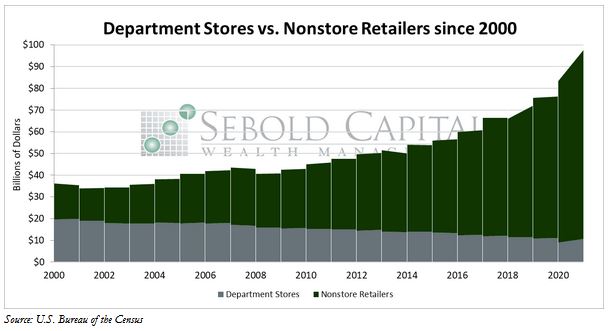 Retail Sales are the total amount of merchandise and related services sold to consumers. It is considered a sign of strength of U.S. Consumer spending, which accounts for roughly two-thirds of the economy. This indicator also provides insight into which areas of the retail space are experiencing strong sales.
Retail Sales are the total amount of merchandise and related services sold to consumers. It is considered a sign of strength of U.S. Consumer spending, which accounts for roughly two-thirds of the economy. This indicator also provides insight into which areas of the retail space are experiencing strong sales.
In June, retail sales rose 0.6% to $621.3 billion. Excluding auto sales, retail sales rose by 1.3%. Three of the four broad categories advanced last month. Apparel sales increased 2.6% to $25.8 billion, food & beverage sales rose 2.3% to $70.6 billion, and electronics and appliance sales increased 3.3% to $8.2 billion. However, sales at sporting goods, hobby, and bookstores declined 1.7% to $9.4 billion.
Retail sales increased last month as consumers boosted spending on dining out, apparel, and electronics. Consumers have recently shifted more of their spending towards bars and restaurants. Sales at these establishments are up 11.6% since March, when most of the pandemic-related restrictions started to be eased. However, sales of cars and car parts declined by 2% as dealerships face severe shortages and used car prices soar. Sales at department stores advanced 5.9% to $12.1 billion, while non-store retailers saw sales increase by 1.2% to $88.0—reflecting consumers’ eagerness to spend outside the home. While consumer demand has undoubtedly soared in the past few months, rising prices could be making retail sales appear higher than they truly are. Consumer prices (as measured by the CPI) rose 0.9% last month, and have soared 5.4% over the past year. If prices continue to rise at a similar rate, consumers will be more reluctant or simply unable to continue spending, causing the ongoing economic recovery to stagnate.

July 16, 2021
